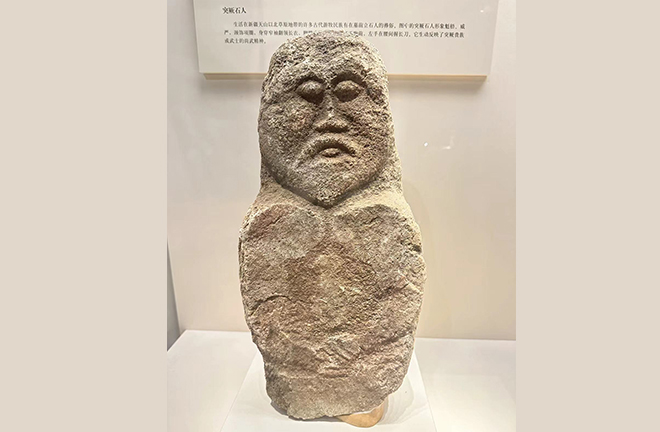Steppe Silk Road

A stone Turkic man from the Tang Dynasty, exhibited in the National Museum of China Photo: Ren Guanhong/CSST
The Steppe Silk Road, an integral component of the famed Silk Road network, served as a vital trade conduit linking the Mongolian steppe region with the broader Eurasian continent. Functioning as a crucial artery for nomadic cultural exchanges, its route began in the Central Plains, extending northward across Daqing Mountain and the Yan Mountains alongside the Great Wall. From there, it traversed northwest through the Mongolian Plateau, the southern Russian steppe, northern Central and Western Asia, culminating in Mediterranean Europe.
For the Steppe Silk Road, the demand for commodity exchange originated from the division of labor between agriculture and animal husbandry. This mutual economic need and interdependence between the Central Plains and steppe regions laid the foundation for the formation of the Steppe Silk Road.
Archaeological studies suggest that the Steppe Silk Road was initially formed around the 5th century BCE. Across the vast expanse of the Eurasian steppes, discoveries of gold ornaments and bronzes featuring similar decorative styles and shapes have been discovered at multiple sites, providing compelling testimony to extensive cultural exchanges and efficient trade channels connecting different regions.
The Steppe Silk Road reached its peak during the Yuan Dynasty (1271–1368), propelled by the establishment of a sophisticated relay station system. With the capital Dadu (present-day Beijing) and Shangdu (at present-day Zhenglan Banner, Inner Mongolia) as the center, the Yuan built a developed transportation network connecting Mobei [the area north of the Gobi Desert] to Siberia, west to Central Asia and Europe, east to northeast China, and south to the Central Plains. Under the Yuan, a total of 1,519 relay stations were established across the country, equipped with more than 4,000 station vehicles. These vehicles were specially designed for the transportation of gold, silver, goods, banknotes, tributes and other valuable materials. Merchants from Arabia, Persia, and Central Asia traveled to and from China via the Steppe Silk Road.
Edited by REN GUANHONG
